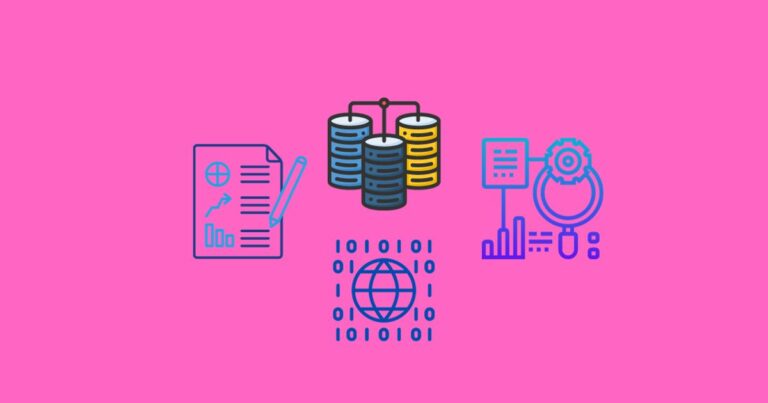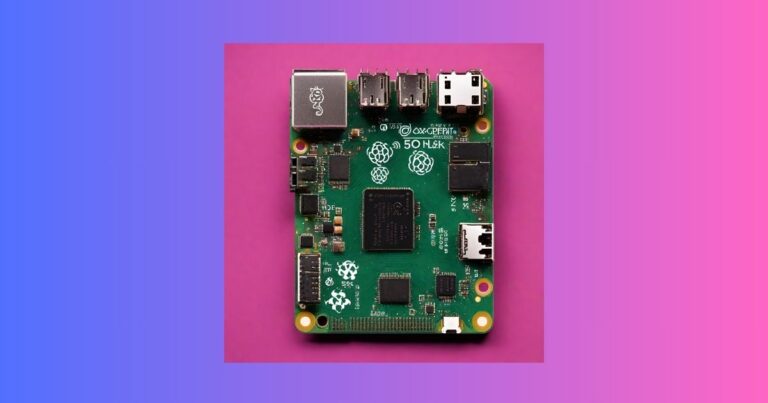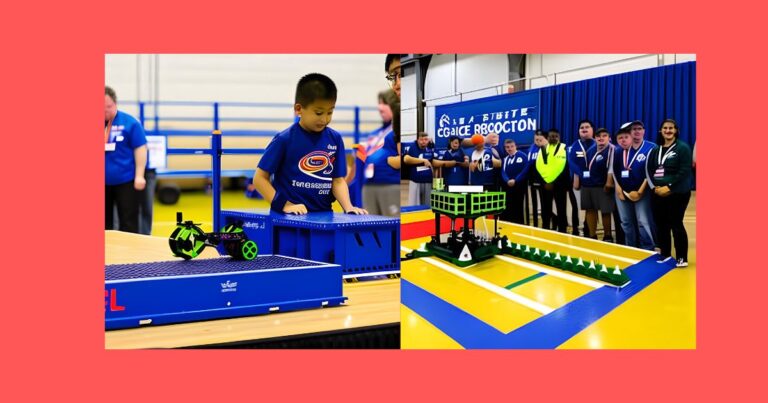The Use of Technology in Education: Enhancing Learning in the Digital Age
In this digital age we live in technological improvement has a great impact on our lives, transforming various industries and sectors, including education. The influence of technology in education has been profound and offers new opportunities, challenges, and new experiences for students worldwide. In this article, we will delve into how technology has revolutionized education and will provide a better understanding of its impact and benefits that brings to both students and educators.

The Benefits of Incorporating Technology in Education
Access to Information and Resources
One of the most common advantages of technology in education is easy access to information and resources. With just a few clicks students can get information from reliable sources, broaden their knowledge, and conduct research on various topics. Online libraries, educational websites, and digital archives have a wealth of information that is readily available. That eliminates the limitations of traditional materials. Students can now explore required information from experts across the globe and foster a broader understanding of the subjects they study.
Personalized Learning Experiences
Technology enables personalized learning experiences tailored to individual students’ needs of learning. Adaptive learning platforms and use algorithms to analyze student performance and feedback. This approach allows students to progress at their own pace, filling knowledge gaps and understanding the concepts. By catering the individual needs technology facilitates a more engaging and effective learning environment. Students can explore topics of interest in greater depth and can receive additional support in the areas where they may face problems and can improve their academic outcomes.
Interactive and Engaging Content
Technology in education has made learning easier and more engaging. Multimedia elements such as videos, and interactive presentations, capture students’ attention and active participation. Traditional textbooks are being augmented with digital content that includes interactive features, enabling students to visualize complex concepts and engage with the material in a more hands-on manner. Gamification techniques such as educational games and quizzes transform the learning process into an enjoyable experience. Interactive content and technology stimulate students’ curiosity and motivate them to explore new knowledge.
Collaboration and Communication
Technology has revolutionized collaboration and communication in the educational system. Digital platforms and tools enable students and educators to connect and interact beyond the confines of physical classrooms for education. Online discussion forums, video conferencing, and collaborative workspaces facilitate group projects, virtual teamwork, and global connections. Students can collaborate with peers from different cultural backgrounds, gaining valuable insights and developing essential interpersonal skills. Such opportunities for the development of 21st-century skills, including teamwork, communication, and cross-cultural understanding, prepare students for the diverse and interconnected world they will enter.
Makes studying enjoyable through the use of Technology.
Educating young children and maintaining their focus can be quite a challenge, as their attention easily wanders. Similarly, older students often struggle to stay engaged and complete extensive assignments. Introducing tablets, laptops, VR/AR devices, and touchscreen boards into classrooms has revolutionized the learning experience, imbuing it with excitement for students. These cutting-edge tools enable teachers to effortlessly capture and hold the attention of their young pupils. Likewise, advanced technologies facilitate higher-grade students’ comprehension of intricate concepts and scientific principles through immersive sessions. Consequently, one of the most significant advantages of integrating technology into education is its ability to infuse learning with an undeniable sense of enjoyment. Teachers witness a remarkable growth in students’ interest, which is then reflected in their enhanced academic performance and overall marks.
Overcoming Challenges and Concerns
While the integration of technology in education offers many advantages it also presents some challenges and concerns that need to be addressed.
Access and Equity
One of the big concerns is ensuring equitable access to technology and digital resources for all students. The digital divide, characterized by disparities in internet connectivity and device availability creates barriers that hinder some students from fully benefiting from technological achievements. Efforts should be made to bridge this gap and provide equal opportunities for all learners to access and utilize educational technology. Initiatives such as providing schools with required resources and offering affordable internet connectivity can help level the playing field and ensure that every student has an equal chance to harness the benefits of technology.
Privacy and Security
The use of technology in education raises concerns regarding student privacy and data security. Educational institutions must implement robust data protection measures and apply strict privacy policies to safeguard sensitive information. It is crucial to educate students and teachers about responsible digital citizenship and safe online practices to mitigate potential risks. Ensuring secure and private environments for digital learning is essential for maintaining trust and safeguarding the well-being of students.
Pedagogical Integration
Effective integration of technology requires great skilled educators who can work their potential to enhance learning outcomes. Professional development programs should be implemented to train teachers in utilizing technology in a better way in the classrooms. Emphasizing pedagogical integration to ensures that technology becomes a tool that complements and changes traditional teaching methods, rather than a mere replacement. Teachers must be equipped with the knowledge and skills to choose appropriate educational technology, create a digital learning experience, and provide guidance and support to students in navigating the digital landscape.
The Future of Technology in Education
As technology continues to evolve and touch new edges, its impact on education is expected to expand further. Here are some emerging trends that hold promise for the future.
Artificial Intelligence and Machine Learning
Artificial intelligence and machine learning have the potential to revolutionize the education system and it has the power to change it completely as maybe humans can’t think. AI-powered tutoring systems can provide personalized and adaptive learning experiences, offering immediate feedback and tailored content. Machine learning algorithms can analyze large sets of databases to identify patterns and trends, enabling data-driven decision-making for education policymakers. Intelligent virtual assistants can assist students in their learning journey, answering questions providing valid solutions for their problems, and providing guidance in real time.
Virtual and Augmented Reality
Virtual reality(VR) and augmented reality(AR) technologies have gained momentum in the education system. They provide immersive and interactive experiences, allowing students to explore virtual environments and visualize complex data. VR and AR simulations can be particularly beneficial for subjects like science, geography, and history where hands-on experiences are crucial for understanding. Students can step into virtual laboratories, ancient civilizations, and distant planets, enhancing their understanding through experiential learning.
Internet of Things (IoT) and Smart Classrooms
The Internet of Things (IoT) is transforming traditional classrooms into smart learning environments. Connected devices and sensors can collate real-time data on student performance, attendance, and engagement. This data can be used to personalize identify areas for improvement and enhance the overall learning experience. Smart classrooms equipped with Internet of Things devices offer opportunities for seamless integration of technology into everyday educational activities, creating dynamic and adaptive learning spaces.
If you are a student and you spend day after day in libraries and searching your required information for your assignment or projects but now thanks to the benefit of the internet for students you can now access correct and valid information anytime from anywhere from a vast number of sources available on internet i.e., websites, YouTube videos, eBooks, PDFs and many more.
The advantage of using technology in the education system ability to change the whole perspective of education. It is a blessing for everyone in the sector from educational institutes and students. The use of technology in the education system made learning much easier and fulfilled the requirements of students as well as institutions. Teachers and students both use different AI-based tools and AR/VR technologies to engage them in different learning experiences.
Technology in education is consistently changing the education system for good things, while it has not completely replaced the traditional classroom methods of learning, it has its benefits, Structure and Discipline, Face-to-Face Interaction, Personalized Guidance, Development of Social Skills, Established Curriculum, Access to Resources, Peer Learning and Development of Soft Skills. While technology and innovation in teaching methods have brought significant advancements to education the traditional education system continues to provide a solid foundation and environment for learning and development. It offers a structured and supportive environment, promotes social interaction, and focuses on holistic development.
The Internet of Things is transforming traditional classrooms into smart learning environments. Connected devices and sensors can collate real-time data on student performance, attendance, and engagement. This data can be used to personalize identify areas for improvement and enhance the overall learning experience. Smart classrooms equipped with Internet of Things devices offer opportunities for seamless integration of technology into everyday educational activities, creating dynamic and adaptive learning spaces. Another big benefit of using technology in education is that it helps students to get an education in a personalized way. There are digital apps that allow teachers and students to perform well and it’s an easy way of learning according to their timelines, schedules, capabilities, and skills. Overall, as confirmed by many specialists in the education system told is better to use new ways of technology in education performing better in the education sector.







Admiring the time and energy you put into your website
and detailed information youu provide. It’s awesome to coime across a blog
every once in a while that isn’t the same unwanted rehashed information. Excellent read!
I’ve saved your site and I’m adding your RSS feeds to mmy
Google account.
Also visit my web-site – Binance fee discount (Jeremy)
Very nice write-up. I definitely appreciate this website.
Keep writing!
Have you ever considered including a little bit
more than just you articles? I mean, what you ssay is important and all.
But just imagne if you added spme great images or videos to give
your posts more, “pop”! Your content iis excellent but with pics and video clips, this site
ciuld undeniiably bee onee of the vry best in its niche. Excellent blog!
It’s a shame you don’t have a donate button! I’d certainly donate to this superb blog!
I guess for now i’ll settle for bookmarking and adding your RSS feed
to my Google account. I look forward to brand new updates and will talk about this website with my Facebook group.
Talk soon!